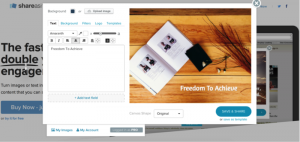What Every Marketer Can Learn From The Winning Strategy At ‘Teen Vogue’
by Elizabeth Hellman, Columnist, March 2, 2017
In early December, a scathing op-ed about the soon-to-be President made huge waves throughout the media ecosystem. The essay went viral and earned kudos from journalism’s elite for its bold stance and courageous call to action. It also received some raised eyebrows, because the source wasn’t The Washington Post or The New York Times. It was Teen Vogue.
Once among a host of other glossy magazines targeting young girls, Teen Vogue has outlasted most of its rivals. And with some bold, courageous, eyebrow-raising moves of its own over the past year, the nearly 15-year-old Condé Nast title is flourishing.
Teen Vogue’s thoughtful reinvention is bucking industry trends and in examining its newfound prestige and popularity there are a few valuable lessons for marketers
1. Don’t just listen; encourage your audience to speak
At the heart of the new Teen Vogue is its audience and today that audience is civically active and socially minded. Rather than follow teen tropes of the past, the magazine’s editorial team is speaking to the generation’s values, supporting their unique voices and encouraging meaningful discourse.
The magazine hasn’t completely departed from its origins as a fashion and lifestyle title, considering them among of the topics about which there are stories to tell. They’re just letting the readers themselves have more of a say on the stories that get told. Not only does the social media team mine their readers’ social conversations for timely story ideas, they often bring in authentic voices to tell them.
Recent content has included video conversations with young American Muslim women, the story of a Syrian immigrant and her successful search for love and even a photo essay with insider photos of the Flint water crisis. With stories like these, Teen Vogue is fulfilling its goal to be a platform where the under-represented can be represented, and even express themselves.
2. Make cross-platform part of your DNA
Condé Nast has not entered the digital age unscathed. The publisher has launched, then folded, digital destinations and trimmed staff for others as they adapted to the new media paradigm. One might think the publisher would take a digital-first approach with Teen Vogue but they’ve actually made an organizational change that puts every platform on equal footing.
Condé Nast is making heavy investments in Teen Vogue’s digital brand but the print magazine, which still has a subscriber base of around 1 million, is not being treated as an afterthought. The number of issues has been reduced to four per year, but they’re making those issues something readers will want to collect. They’re larger, thicker and, perhaps most importantly, they offer something different from the online content. So far that’s keeping, or even increasing, the magazine’s subscriber numbers.
3. Remember that owned-site traffic is just one of many valuable “ends”
With most of Teen Vogue’s Gen Z audience glued to their digital devices, they’re maximizing their presence across channels in the wise move to meet their audience where they are. They’re aware that the platforms may not drive traffic back to TeenVogue.com but they also know that increased reach and ability to provide valuable information and resources are necessary for building an audience.
In addition to a robust digital and social media presence, Teen Vogue is ramping up their video content, having seen massive increases in engagement on both Facebook and Instagram. On Facebook, fans were up 12% year over year, but video views were up 243%, a clear demonstration of social video’s power to catalyze meaningful interactions with audiences.
While elements like ad revenue haven’t been publicized, it’s clear the brand is much more valuable now than it was just one year ago. Said Slate’s Mark Joseph Stern about Teen Vogue’s metamorphosis, thepublication “treats teenagers like rounded human beings with agency and intellects. The result is a teen glossy with seriously good political coverage and legal analysis, an outlet for teenagers who—shockingly!—are able to think about fashion and current events simultaneously.”
Or as Pando writer Sarah Lacy said, “Every grizzled Washington insider I know now subscribes to Teen Vogue. This is beyond a thing.”
MediaPost.com: Search Marketing Daily
(20)








